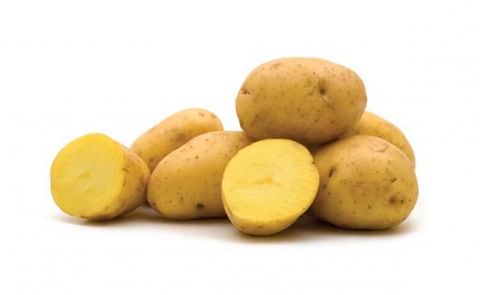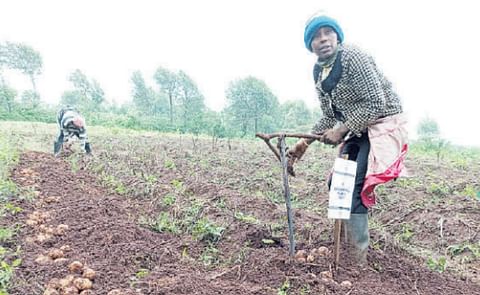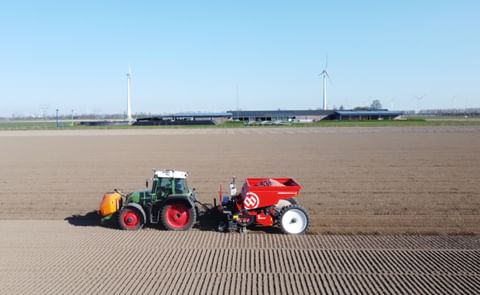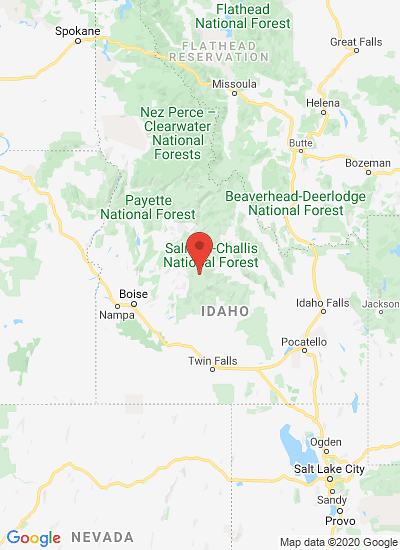A, Local hypersensitive resistance (HR) reaction resulted in wilting and dying of inoculated leaves. B, Systemic mottle and HR expressed as yellowing, necrotic rings and spots, and vein necrosis on upper noninoculated leaves. C, Severe HR symptoms on upper noninoculated leaves. D, Plants inoculated at 3 weeks after transplanting became dead by 6 weeks postinoculation compared with plants inoculated at a later age (right).
Potato plants at highest risk of potato virus Y infection during first three weeks
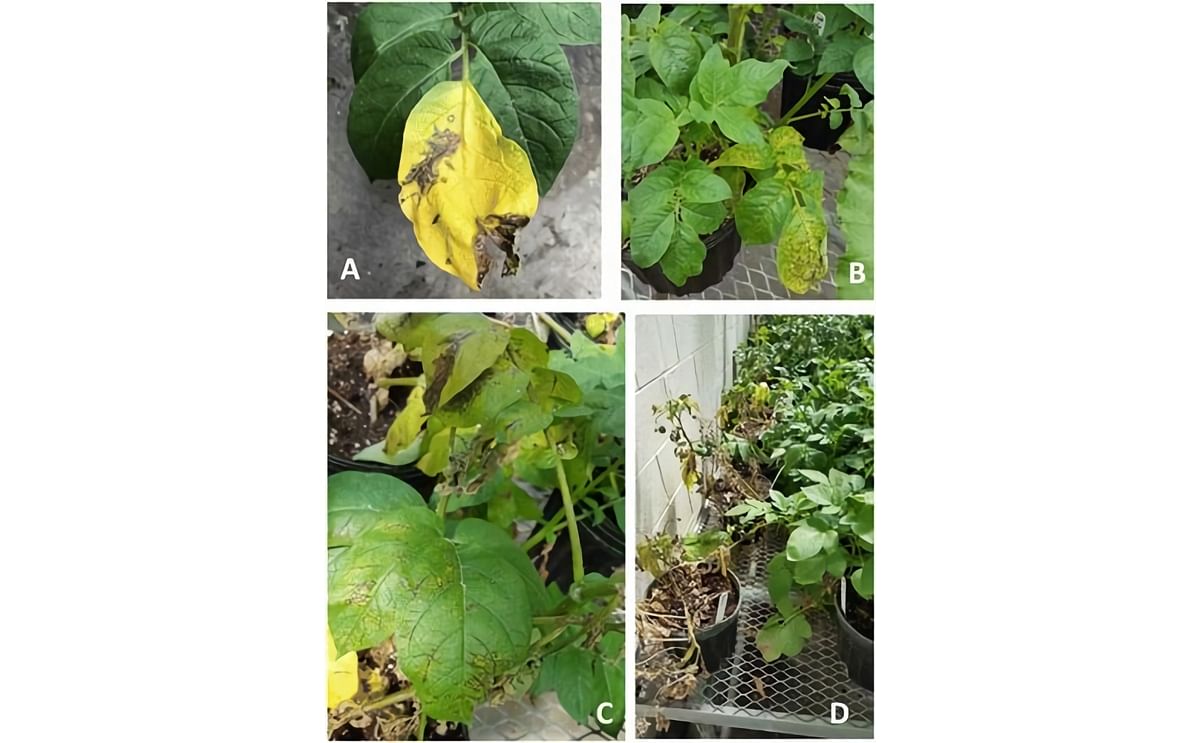
Potato virus Y is the most economically important and devastating aphid-transmitted virus, affecting both tuber yield and quality. The virus is also a major cause of seed potato degeneration, which leads to regular flushing out of seed potatoes after limited field production cycles. There is no remedy for this virus and once a plant becomes infected, it stays sick for life.
Current control methods focus on preventing the virus from infecting potato crops and current research focuses on enhancing preventative measures. In order to increase the efficiency of management of potato virus Y, University of Idaho scientists conducted research to determine when potato plants are most susceptible to infection.
In this study, the scientists matched a North American potato cultivar, Yukon Gold, and a North American isolate of potato virus Y. They discovered that potato plants are most susceptible to infection during the first three weeks of the growing season--these infected plants produced fewer tubers of smaller size and experienced a 70 percent yield reduction compared to plants inoculated during weeks five through eight. These plants did not suffer any yield or quality issues.
This research shows that potatoes develop an age-related resistance that prevents infection and suggests that management programs should focus on the early stages of potato development. These scientists are now conducting follow-up research on other potato cultivars and potato virus Y strains and research that will identify ways for potato growers to protect their crops during the most vulnerable period.
Mohamad Chikh-Ali:
“As plant virologists in a land-grant university, we are interested in applied research that directly benefits the potato industry. This research project is in array with our view and mission.”
“The most surprising results was the dramatic increase in potato resistance to virus infection as potato plants aged. We are very interested in this mechanism due to the great potential on the control of plant virus diseases.”


